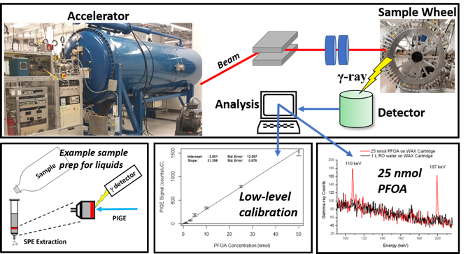Per- and poly-fluoroalkyl substances (PFAS) are a class of synthetic fluorinated organic compounds commonly used in consumer products such as clothing, carpets, upholstery, automobiles, cosmetics, food packaging, ski wax, construction materials, cookware, dental floss, and electronics. According to the USEPA, there are currently more than 5,000 known PFAS with a defined chemical structure that have been produced at some point (https://comptox.epa.gov/dashboard/chemical_lists/pfasmaster). Their widespread use has led to the detection of PFAS in human blood and in remote locations like the arctic. Two of the most used PFAS – perfluorooctane sulfonate (PFOS) and perfluorooctanoate (PFOA) – have been phased out in the US, but they are still used in other countries (e.g., China) and they will persist for a long time due to their recalcitrance. PFOS and PFOA have already been replaced by new PFAS (e.g., GenX, ADONA), and we have limited knowledge about their environmental and biological activity. Adding to the problem are the tens of other known PFAS in the environment, but one of the pressing key issues is the hundreds of unknown PFAS that have yet to be identified.

In indoor facilities, humans are exposed to PFAS through air and dust as they volatilize and/or transform to other PFAS through mechanical and chemical processes. To date, most PFAS have gone undetected in indoor facilities due to limited analytical capabilities. Further, there is relatively little information about the transformation of PFAS under conditions observed indoors. The objectives of this project are to (1) quantify total PFAS in indoor facilities and (2) determine the chemical transformation potential of PFAS to more terminal products such as PFOA. Total PFAS will be quantified using a method developed at the University of Notre Dame based on particle induced gamma ray emission (PIGE) spectroscopy (Figure 1). Dust and air samples across different spatial and temporal scales will be collected in indoor facilities (e.g., homes, offices, recreational) and analyzed using PIGE coupled with a unique sample preparation method that will identify different chemical fractions of total PFAS (e.g., anionic, neutral). In the lab, we will conduct batch experiments under ambient conditions to simulate the exposure of various PFAS to reactant conditions commonly found in indoor facilities. Our results will provide a more complete picture about our exposure to PFAS and the chemical behavior of PFAS in indoor environments.